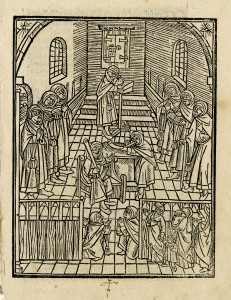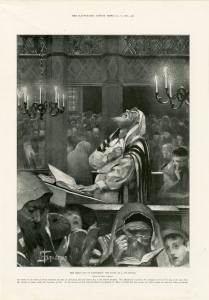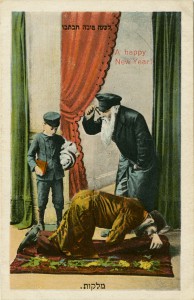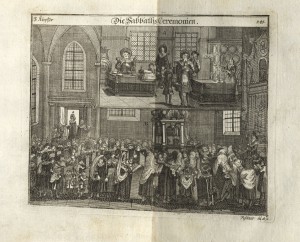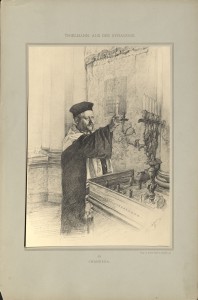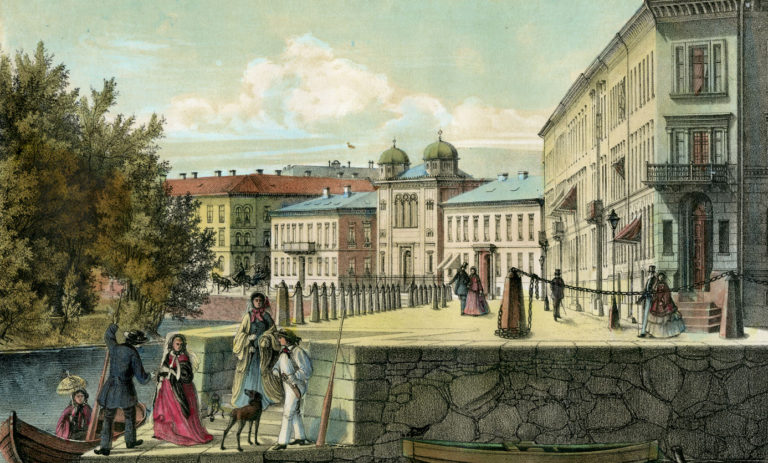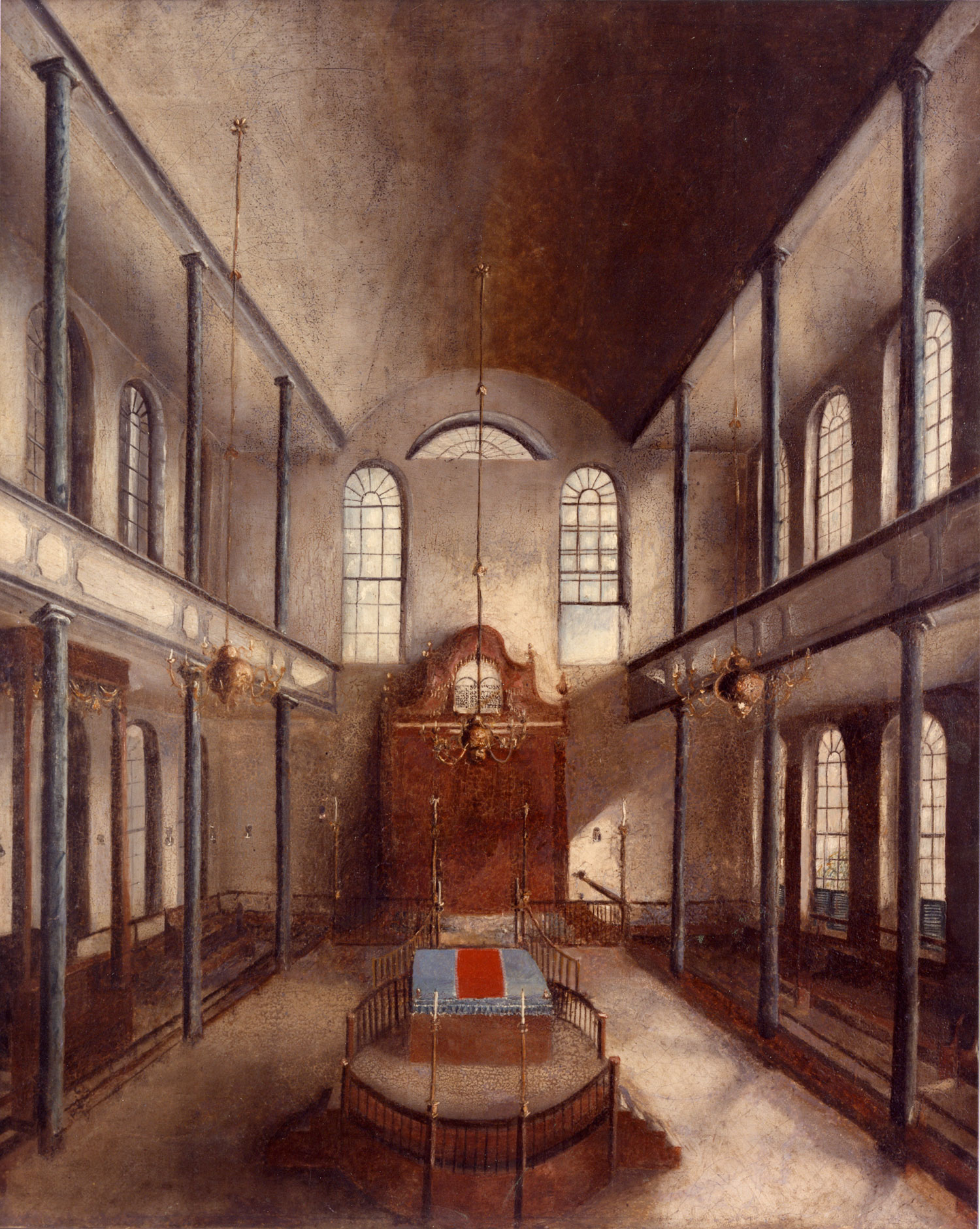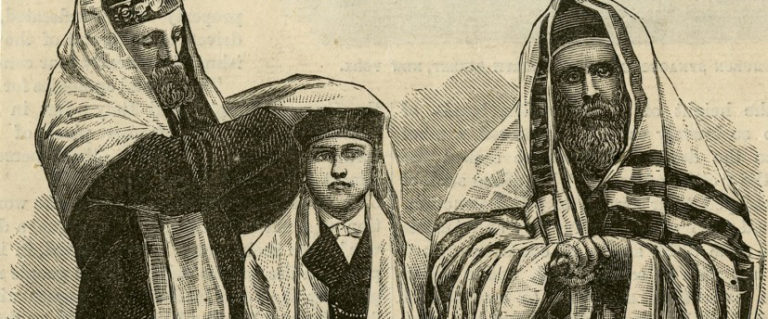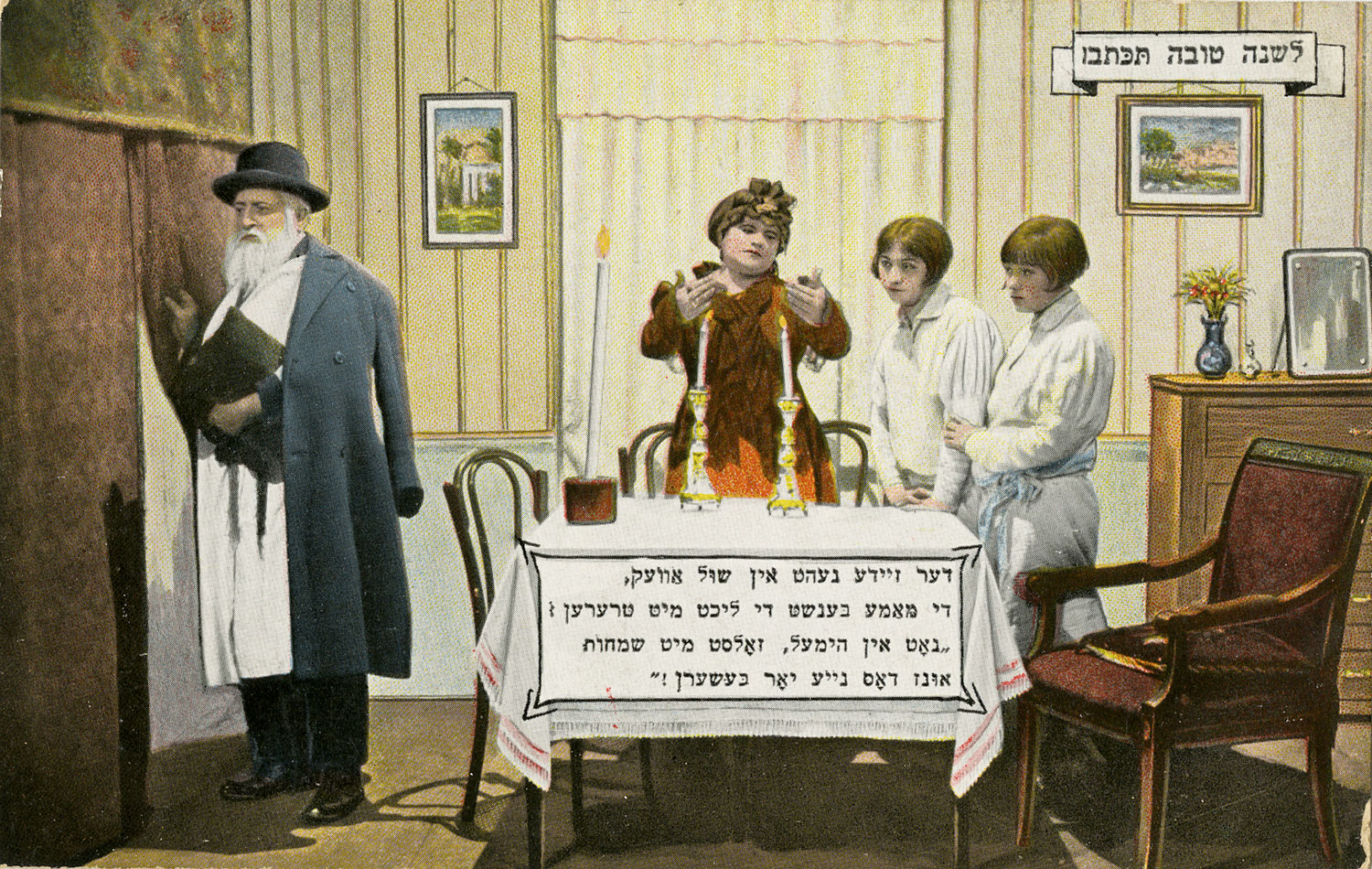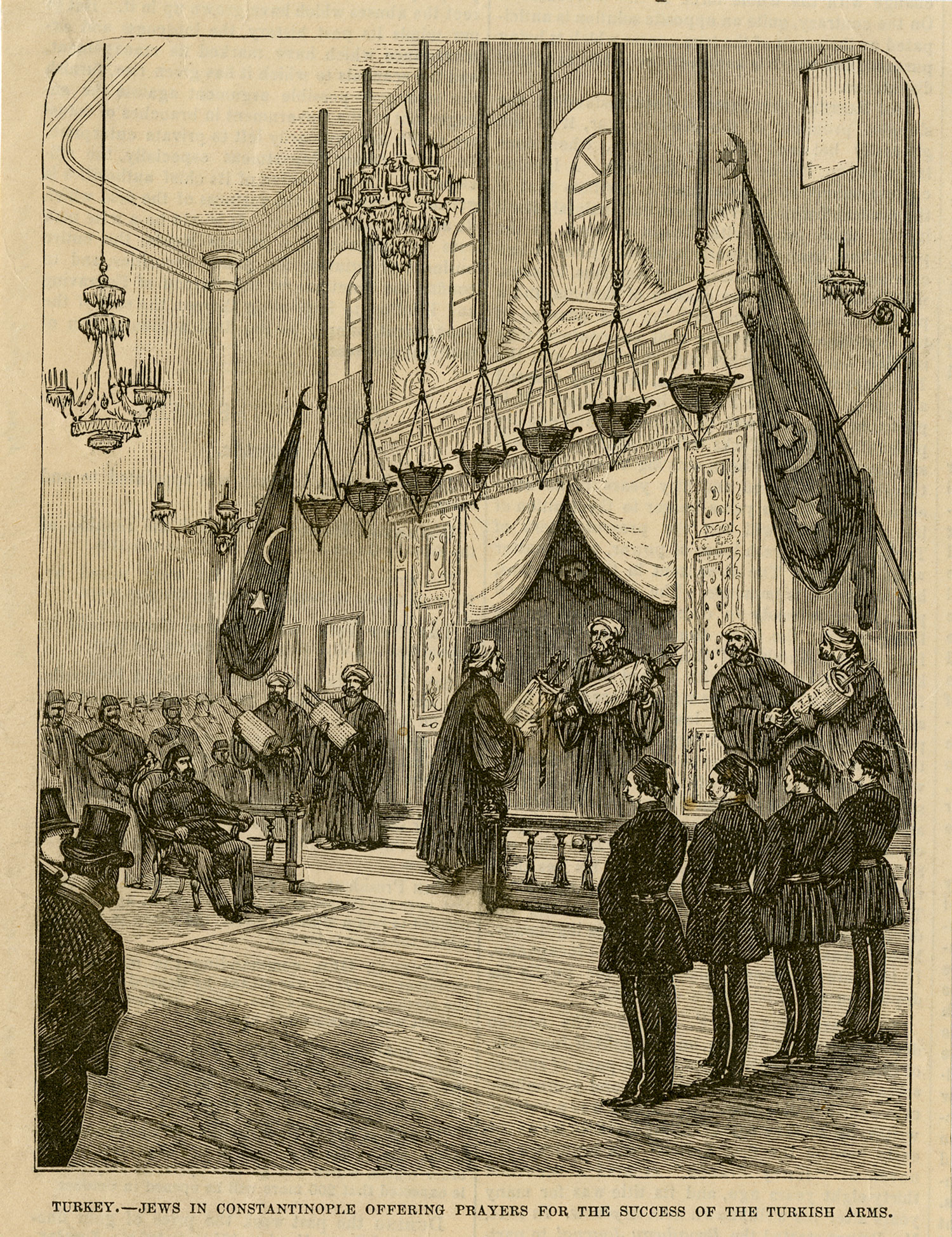Section 6. Fasts & Festivals
The Jewish calendar, based on both lunar and solar cycles, precisely calculates the beginning and ending of the weekly Sabbath and fixes the schedule of festivals and fasts throughout the year. Each holiday is celebrated with a special liturgy including rituals and prayers.
The liturgical year begins in the autumn with Rosh Hashanah, the Jewish New Year, followed ten days later by Yom Kippur, the Day of Atonement, which in turn is followed by Sukkot. In the history of Jewish and Christian visual culture, observance of these holidays has received the most attention. This is partly because of their importance to Jews, and partly because the distinctive events and activities associated with the holidays have appealed to Christian commentators and illustrators who often depicted the blowing of the shofar (ram’s horn) on Rosh Hashanah, the emotional confessional (vidui) prayers of Yom Kippur, and the carrying and blessing of the lulav (palm brach) and etrog (citron) and the building of outdoor booths on Sukkot. To this repertoire of Jewish rituals, we can add the distinctive act of lighting the Hanukkah menorah—at home or in the synagogue. Other festivals, especially those mostly celebrated in the home, such as Purim and Passover, have received more attention over the centuries by Jewish artists, particularly in the production of illustrated scrolls of Esther (Purim) and Haggadahs (Passover).
Depictions of Jewish holidays can be found in various mediums—from paintings to fine art prints to illustrations accompanying 19th– and 20th-century periodicals. One especially noteworthy format is the Jewish New Year’s card. In the late 1800s and early 1900s, a rich visual culture developed around the High Holidays in the form of New Year’s cards. Hundreds of variations, from cheap postcards to more elaborate foldout confections, were produced, mostly in Germany, but distributed widely among Jewish immigrant populations in America and other countries, too. These were not limited to images of Rosh Hashanah and Yom Kippur rituals and sometimes featured other holidays. Through these various mediums, we are able to view Jewish fasts and festivals as they are represented by both Jews and non-Jews for a variety of audiences.
While many aspects of holiday observances took place at home, this section provides a view of those centered in the synagogue, offering views of Jewish communities celebrating through shared ritual, tradition, and history.
